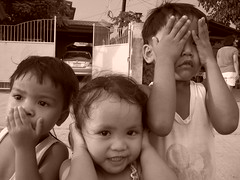A few months ago I asked for people to fill out an Oral Language Survey as part of my research in the E-Fellowship programme this year. 36 teachers from throughout New Zealand took part in this survey - A big thank you to all those who took part. I thought I would begin to summarise some of the findings on this blog.
Of the 36 teachers who filled in the survey, 72% teach in the primary sector, 9% in the Intermediate and 3% in High School.
How many hours per week do you spend on the following literacy areas?
- Writing - ranged from 1 hour per week to 8 hours per week with an average of 4 hours
- Reading - ranged from 1hour per week to 7 hours per week with an average of 4.5 hours
- Visual Language - ranged from 20 min per week to 5 hours with an average of 1.5 hours
- Oral Language - ranged from 0 hours per week to 12.5 hours with an average of 3 hours.
In the responses to reading and writing, one person mentioned that they integrate these subjects and in the responses to visual and oral language three people mentioned that they integrated throughout the curriculum. One response to Visual Language read, "Don't know what this is".
I am just reporting back statistics straight from the survey here and would not like to draw too many conclusions as yet. This is only one part of my data gathering to form an overall picture. But I would like to say that it is interesting how differently teachers run their programmes. It seemed that teachers found it easier to calculate the times they spent teaching reading and writing as these two areas of literacy seem to stand alone outside the programme even when integrated. Other things are integrated into these areas. Visual and Oral Language on the other hand are seen as integrated through all other curriculum areas.
This does lead me to wonder whether enough specific focus is put on these two areas. If you think about the skills adults will need in the 21st Century (as far as we can predict anyway) it seems to me that Oral language is maybe one of the most important skill students can take away from our classrooms. A person with well developed oral language skills can communicate their needs and ideas effectively. Also students are interacting more and more with visual images. I believe being able to communicate and interpret visual images will be just as vital as being able to write in the coming years. I am not saying that writing is not important, it is. But it must be underpinned by effective oral language skills. The four strands go hand in hand. My aim is not to push Oral Language to the detriment of all other literacy areas, but to bring it out into the immediate family. As I see it currently, Oral Language is the third cousin in the back row of the wedding photo with his head obscured by the bride's veil.
technorati tags:orallanguage, oracy, survey, literacy, reading, writing, visuallanguage, efellowship
Blogged with Flock






2 comments:
Oral Language is the third cousin in the back row of the wedding photo with his head obscured by the bride's veil.
Still laughing at this simile. But so true- for my class at least- something for me to work on.
Allanah K
Yes, very good simile.
I would be interested in looking at your survey once you have further analysed the data.
Post a Comment